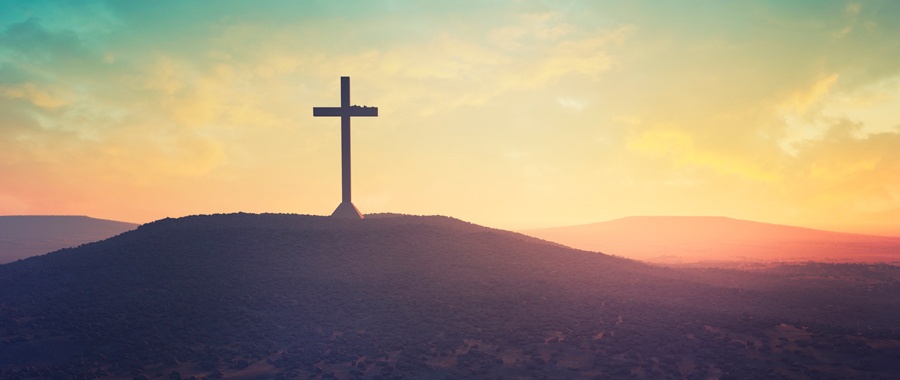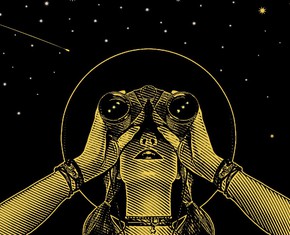The views expressed in our content reflect individual perspectives and do not represent the authoritative views of the Baha'i Faith.
What does the mysterious prophecy in the Book of Revelation mean when it describes the descent of “the New Jerusalem?”
In the previous article in this series, relying on the primary Baha’i principle of the harmony of science and religion, I proposed a threefold approach to the interpretation of any given prophetic text, beginning with the “historical-contemporary” approach, which concerns what the original author intended, and what the audience understood at or around particular time that the Book of Revelation was written.
The next step involves looking at the history of subsequent interpretations of the very same text. The third and final step invokes “presentism” to see if this same text has any meaningful application today, especially from a symbolic Baha’i point of view.
Historically, many subsequent interpretations of the “New Jerusalem” abound. Here are a couple of examples of those interpretations, both included in my 2015 book God & Apple Pie. The first example comes from the Church of Jesus Christ of Latter-Day Saints, popularly known as the Mormons:
The Book of Mormon describes America as “the land of promise” for a Jewish remnant, who would traverse “across the great deep into the promised land”:
And behold, this people [Jewish remnant = Nephites/Lamanites] will I establish in this land [America], unto the fulfilling of the covenant which I made with your father Jacob; and it shall be a New Jerusalem. And the powers of heaven shall be in the midst of this people; yea, even I [Jesus Christ] will be in the midst of you.
America would also be home to “Gentiles” who “were white, and exceedingly fair and beautiful.” Together, the Jews and Gentiles of America will work together to build the New Jerusalem: “And then shall they [Gentiles = Euro-Americans] shall assist my people [remnant of Jacob = Lamanites = Native Americans] that they may be gathered in, who are scattered upon all the face of the land, in unto the New Jerusalem.” – p. 166.
The next example is even more controversial. In this racist interpretation of the Book of Revelation, the United States is also expected to become the “New Jerusalem,” as interpreted by religious white supremacists from the LaPorte Church of Christ in Colorado, led by Pastor Peter J. Peters:
America is the New Jerusalem, in Peters’ view. “I see in scripture that there will be a new Jerusalem and it is not the old Jerusalem,” Pastor Peters explains. “Here is described a J-e-r USA l-e-m. America is in the Bible and America will be redeemed from the hand of her enemies, which is Babylon. She will be delivered.” This is further evidence that Scriptures for America is a Christian white nationalist movement, but without the virulent and violent characteristics of radical Christian Identity extremists. As is obvious in the spelling of “JerUSAlem,” it would appear that, since the United States of America is obviously meant by the capital letters, “USA,” then it would stand to reason that the White homeland is America itself, meaning the entire country … – Ibid., p. 203.
What these two examples have in common is not only that America is destined to become the “New Jerusalem,” but that a racial component exists as well.
In stark contrast, the Baha’i vision of the New Jerusalem looks exactly the opposite: cosmopolitan, egalitarian, universal, equalitarian, and utopian, characterized by the unity of races, religions and nations:
… in this age of splendours, teachings once limited to the few are made available to all, that the mercy of the Lord may embrace both east and west, that the oneness of the world of humanity may appear in its full beauty, and that the dazzling rays of reality may flood the realm of the mind with light.
The descent of the New Jerusalem denoteth a heavenly Law, that Law which is the guarantor of human happiness and the effulgence of the world of God. – Abdu’l-Baha, Selections from the Writings of Abdu’l-Baha, p. 59.
Baha’u’llah directly quoted Revelation 21:22–23 in this passage – which actually contains Baha’u’llah’s title, “the Glory of God:”
This day the City of God hath appeared and can be witnessed in perfect adornment. This is the City in which the God of all peoples hath appeared. Ponder these words of John, who announced the great and sacred City and said: “And I saw no temple in it; for the Lord God Almighty and the Lamb are the temple of it. And the city had no need of the sun, neither of the moon, to shine in it; for the glory of God did lighten it, and the Lamb is the light of it.” – Baha’u’llah, provisional translation, quoted in “The Eschatology of Globalization: Baha’u’llah’s Multiple-Messiahship Revisited,” Studies in Modern Religions, Religious Movements and the Babi-Baha’i Faiths, p. 150.
So, does the Book of Revelation directly refer to the future advent of Baha’u’llah? The answer is simple, yet open-ended: Baha’u’llah’s interpretation is a form of presentism – prophecy as applied to the present day and age.
Elsewhere, in another poignant passage on the New Jerusalem, Baha’u’llah rhetorically asks the reader to decide which is more important – a physical temple, or a spiritual one:
Thus have We built the Temple with the hands of power and might, could ye but know it. This is the Temple promised unto you in the Book. Draw ye nigh unto it. This is that which profiteth you, could ye but comprehend it. Be fair, O peoples of the earth! Which is preferable, this, or a temple which is built of clay? Set your faces towards it. Thus have ye been commanded by God, the Help in Peril, the Self-Subsisting. Follow ye His bidding, and praise ye God, your Lord, for that which He hath bestowed upon you. He, verily, is the Truth. No God is there but He. He revealeth what He pleaseth, through His words “Be and it is”. – Baha’u’llah, The Summons of the Lord of Hosts, p. 137.
Although Baha’u’llah implies the correct answer, the question is left open-ended for the reader to ponder and decide. It’s up to you to decide, for yourself, what is spiritually, mystically, doctrinally, ethically and morally true. In this sense, truth, like beauty, is in the eyes of the beholder. Let’s hope that each and every one of you, our esteemed readers, have a keen sense of beauty and the elegance of truth.
















Comments
Sign in or create an account
Continue with Googleor